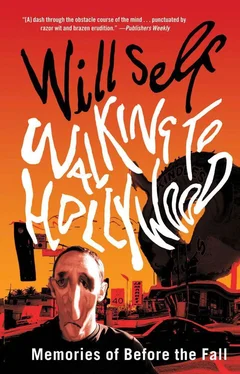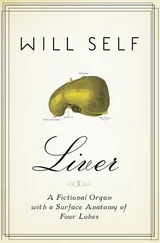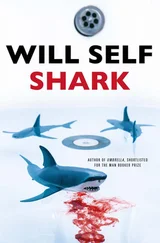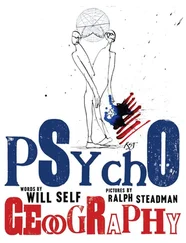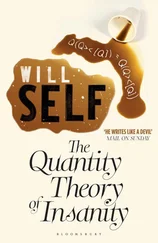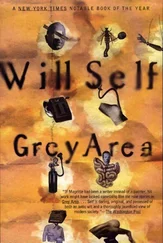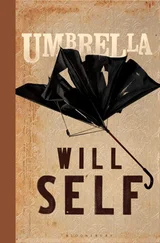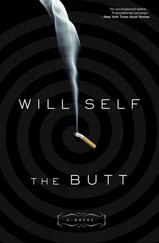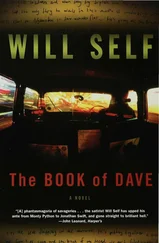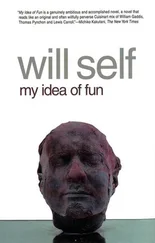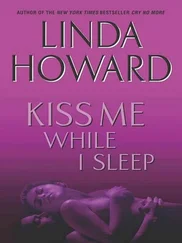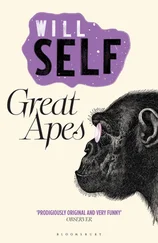Will Self - Walking to Hollywood
Здесь есть возможность читать онлайн «Will Self - Walking to Hollywood» весь текст электронной книги совершенно бесплатно (целиком полную версию без сокращений). В некоторых случаях можно слушать аудио, скачать через торрент в формате fb2 и присутствует краткое содержание. Год выпуска: 2011, Издательство: Grove/Atlantic, Inc., Жанр: Современная проза, на английском языке. Описание произведения, (предисловие) а так же отзывы посетителей доступны на портале библиотеки ЛибКат.
- Название:Walking to Hollywood
- Автор:
- Издательство:Grove/Atlantic, Inc.
- Жанр:
- Год:2011
- ISBN:нет данных
- Рейтинг книги:4 / 5. Голосов: 1
-
Избранное:Добавить в избранное
- Отзывы:
-
Ваша оценка:
- 80
- 1
- 2
- 3
- 4
- 5
Walking to Hollywood: краткое содержание, описание и аннотация
Предлагаем к чтению аннотацию, описание, краткое содержание или предисловие (зависит от того, что написал сам автор книги «Walking to Hollywood»). Если вы не нашли необходимую информацию о книге — напишите в комментариях, мы постараемся отыскать её.
Walking to Hollywood — читать онлайн бесплатно полную книгу (весь текст) целиком
Ниже представлен текст книги, разбитый по страницам. Система сохранения места последней прочитанной страницы, позволяет с удобством читать онлайн бесплатно книгу «Walking to Hollywood», без необходимости каждый раз заново искать на чём Вы остановились. Поставьте закладку, и сможете в любой момент перейти на страницу, на которой закончили чтение.
Интервал:
Закладка:
‘That’s my shill, man, people see that they get to talking, maybe they ask me to write something for them — tell ‘em a story perhaps, y’know oral literature may be the way the whole thing is going, kinda back to the future trip.’
It was lost on me — the shill, the riff — I was already heading on towards the beach. Thomas Mann was calling to me from his exile in the sewer pipe — the Santa Monica Pier was calling to me too. Not all writers were down and out. I ignored the Amazing Chain Man’s cry, which followed me down the block: ‘I do kids parties too!’
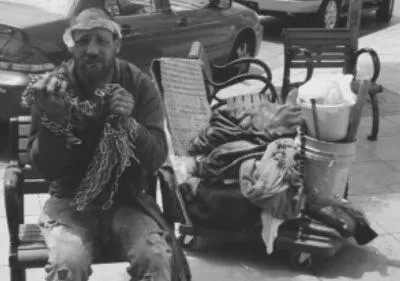
There were no surfer frat boys for me down at the beach, no muscle Manns either, only tourists de-evolving into Segways, and kites tethered to the sand, and craft stalls selling serapes made from tin foil, and glass-bead purses, and figures carved out of pine with quartzite pebble eyes and detachable penises. And there was the Freak Show and the boardwalk cafés, and a wino who looked like Ernest Hemingway with a sign that read ‘Why lie, I need a beer’, and quaint little bungalows festooned with flags, and jogging families, and fat teens hunting for weed, and all the carnival of a Sunday afternoon that I had been exiled from by a circumambulation I now realized had been completely traduced, for I was but one of a legion of writers tramping round LA, we were all the same: poorly registered, our very images thieved from us — just another chapter in the tale of our immiseration. And in final confirmation of this Kazuo Ishiguro danced past, Netherfield Park tied to his head: he’d made it to Venice before me, together with the Bennet sisters.
I left the beach and floundered inland to where, at the intersection of Windward and Pacific avenues, a section of the old arcade was still standing, with its Corinthian columns striding along the sidewalk. I was so disoriented — so dispirited. If I’d had anything to write on I would’ve made a shill of my own, but instead the very ordinary chained man leant against a pillar and felt the whole city — from LAX to South Central, from South Central to Downtown, from Downtown to Hollywood, and from Hollywood to here — revolve about his head, a whirlpool of ’burbs and malls and office blocks and country clubs, through which cars drove and Metro trains clattered with absolute disregard.

Some scenes from Brad’s movie The Shrink were being shot on location nearby, so I headed on over to Dell Avenue with a view to hanging out for a while — the circumambulation might have failed, but not to visit a murder scene when I was in LA to find a killer seemed like a dereliction. This neighbourhood boasted the last-remaining canals, long troughs of stagnant water reflecting the façades of the self-conscious buildings. The vibe was arty, not artful — men who moisturized sat outside upmarket patisseries in the hot June sunlight, sipping cappuccinos with cashmere pullovers tied round their necks.
I spotted where the filming was going on from a long way off: there were maybe twenty or thirty trucks and SUVs parked along the kerb, and around a hundred techies wearing carpenter jeans and T-shirts merchandising Pacific Northwest grunge bands were milling about performing essential tasks. They were all elbows and earrings and had mouthfuls of crocodile clips but no time for me because time was at a $50-per-hour premium. So I pushed on through and discovered maybe fifty or so boys and girls armed with clipboards, and one of them fetched Brad, who swished his lips open in what I supposed was a welcoming smile — either that, or he might’ve been trying to dazzle me with his teeth.
‘There’s not a lot happening,’ he said, ‘but feel free to wander around — we’ll be doing a couple of takes… soonish.’
The house was a 1980s riff on the modernist Case Study aesthetic, all sliding glass doors, wide windows and external conversation pits. A portable generator burbled power on the ground floor, and this was piped up the steep concrete stairs to where cameras, lights and monitors were clustered about the small zone that was to be immortalized. It took over an hour for the eight producers, four directors, seven lighting cameramen, fifteen sound recordists and thirty-eight lighting technicians to be happy with the set-up. I found the process utterly absorbing, all the more so because in order to get the lighting and the camera angle exactly right I was asked to sit on one of the banquettes as a stand-in for Pete Postlethwaite, who was late on set.
When he eventually arrived he came skipping up the stairs looking tanned, relaxed, fit and debonair, with two or three achingly beautiful personal assistants tripping along behind. He barely glanced at me as Brad made a fragment of an introduction — ‘Pete, this is—’ — and skipped on to a zone of mirrors and clothes racks where twenty or thirty makeup artists and wardrobe assistants began prepping him.
I might have been offended, were it not that Postlethwaite’s arrival was immediately succeeded by a still greater commotion — a running back and forth of production crew, the collective making of manifold phone calls, the passing of orders up and down the chain of command, the mournful note of a bosun’s whistle. I hunkered down in a corner and made myself as small as possible; when I looked up again a mass of denim legs was shuffling along the corridor. I stood and peered over their shoulders.
The cynosure of all this activity was looking grimly at a tray being held in front of his overly familiar face, a tray containing a selection of watches — the straps gold, chrome, leather; the faces jewelled, plain or black. It was Kevin Spacey — I recognized him instantly, because in common with all movie stars he had that quality of being pre-known, his face not so much a visage as an a priori category waiting to be filled with a serviceable identity. In this case the limp pennant of a mohair tie, the clever prostheses that filled out his cheeks and neck, the still more skilled weeding out of his hair and the inspired tarnishing of his teeth confirmed that he was portraying Dr Zack Busner.
As Spacey’s hand ranged over the watches, picking one up and then dropping it with a ‘chink’ clearly audible because of the hushed reverence of the 250-strong crew, I was visited with an overpowering intimation of death: Death pressed me back against the rough concrete wall, Death rubbed my belly, Death circled my wrist with his bony finger and bony thumb and all the rottenness of this world oozed from the holes in his skull.
‘OK, rolling.’ Brad’s instruction was incredibly downbeat — no bullhorn, no gofers yelling, ‘Quiet on the set please!’ We couldn’t see the players from where we stood, only a monitor upon which the fuzzy black-and-white figures of Spacey and Postlethwaite confronted each other, seated either side of a concrete coffee table. A clapperboard was waved in front of the camera scrawled with: ‘107 #I. INT. DAY. Busner’s consulting room, Venice Beach’. Then:
BUSNER: How’s it going with Shiva Mukti?
CLIENT: OK, I guess.
BUSNER [ provocatively ]: He’s a neat guy, Shiva, but kinda dull.
CLIENT: He shot movies of me when I was, like, freaking — then played them back to me.
BUSNER: Did it help?
CLIENT [ giggling ]: Help… well, I guess with the movies — and a little bit with reality—
‘OK, that’s cool,’ Brad called, and the whole schmozzle ground to a halt. Spacey stood up and began rolling his shoulders, presumably to ease the tension of performance.
Читать дальшеИнтервал:
Закладка:
Похожие книги на «Walking to Hollywood»
Представляем Вашему вниманию похожие книги на «Walking to Hollywood» списком для выбора. Мы отобрали схожую по названию и смыслу литературу в надежде предоставить читателям больше вариантов отыскать новые, интересные, ещё непрочитанные произведения.
Обсуждение, отзывы о книге «Walking to Hollywood» и просто собственные мнения читателей. Оставьте ваши комментарии, напишите, что Вы думаете о произведении, его смысле или главных героях. Укажите что конкретно понравилось, а что нет, и почему Вы так считаете.
